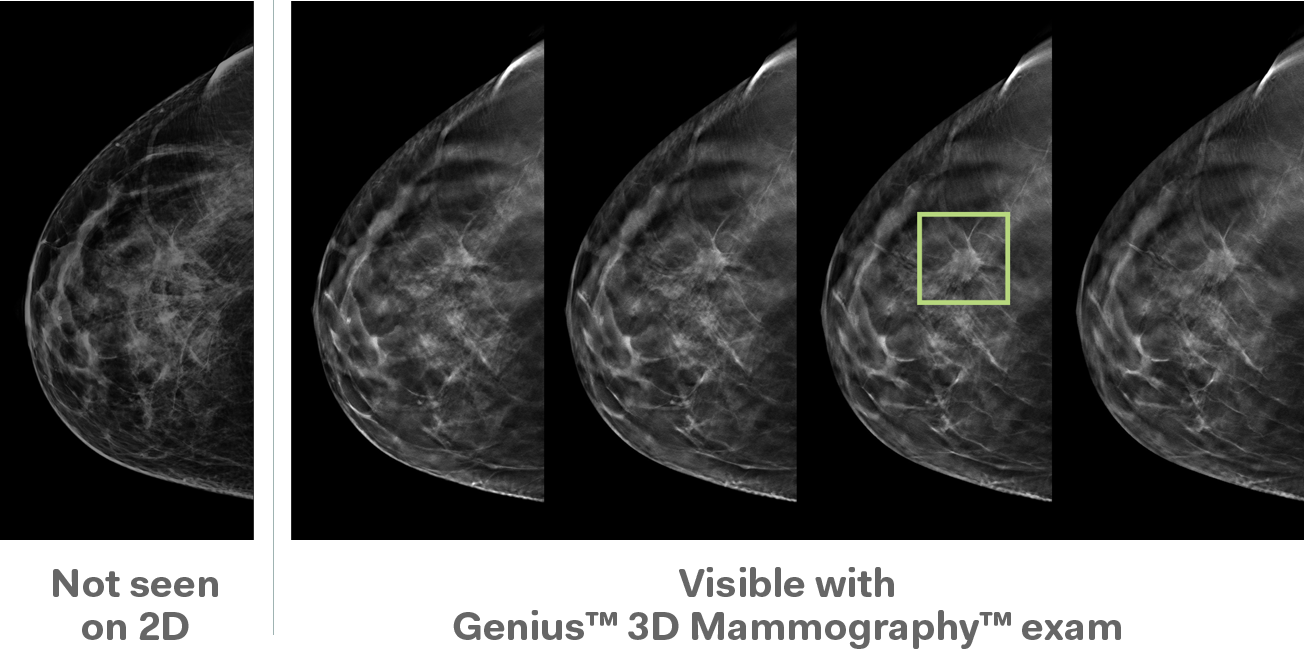When it comes to a breast screening, or any diagnostic exam, you want to be sure your results are as accurate as possible. That starts with experienced and knowledgeable professionals using the most advanced equipment.
UTMB Breast Health and Imaging is pleased to offer innovative technology in screening mammography—3D Mammography, also known as breast tomosynthesis.
Texas is one of only eight states that requires commercial insurers to cover the cost of 3D mammograms.
Increased Accuracy and Fewer False Positives
The Society for Breast Imaging overwhelmingly recommends a 3D mammogram for the best possible outcome, regardless of breast type. Recent research indicates that 3D mammograms are more accurate than digital and film mammography and offer fewer false positives
than ultrasound mammography for women with dense breasts.
See the Difference:
Here you can see how the 3D mammogram on the right exposed a light spot, indicating a possible cancer growth that was missed by the 2D mammogram.
